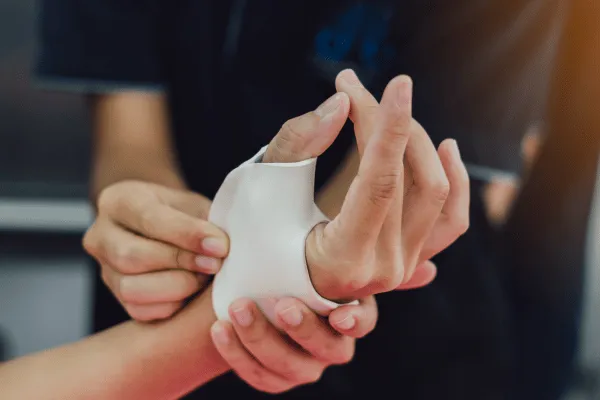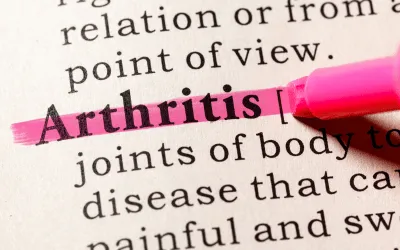About Arthritis
As the nation’s #1 cause of disability, arthritis affects nearly 60 million adults and 300,000 children. Over 100 types of arthritis and related conditions damage the joints and often other organs.
How can we assist you?
Helpful Tools for You

Guided Hand Care for Those with Rheumatoid Arthritis
The human hand is truly remarkable, boasting 29 joints and a complex system of muscles, ligaments, and tendons. This allows us to do intricate tasks, from performing surgery to playing musical instruments like the violin. However, with arthritis, especially rheumatoid arthritis (RA) in the hands, even basic tasks can become challenging or cause discomfort. The good news is that a combination of medical care and occupational therapy can help. Solutions like splinting and using adaptive aids are available to ease the stress on the hand's joints and ensure they remain mobile. And, if there's already joint damage, surgery might be a consideration to bring relief.
Caring for Your Joint Health:
Managing arthritis involves essential medications that help ease pain and control inflammation throughout your body, especially in the hands. Depending on your specific needs and the extent of your arthritis, your healthcare provider might recommend disease-modifying antirheumatic drugs (DMARDs) or nonsteroidal anti-inflammatory drugs (NSAIDs). You can access these as oral medications, injections, or, in the case of NSAIDs, even as topical treatments.
If standard treatments aren't entirely effective or if the inflammation is localized to a few specific joints, corticosteroid injections could be considered. These resemble a hormone your body naturally produces. By directly injecting them into the affected joints, they act to reduce inflammation and come with an added anesthetic component for prolonged pain relief. While these injections can be repeated if necessary, it's standard practice to limit their frequency to safeguard against potential side effects, usually no more than three or four times per joint annually.
Supportive Tools and Occupational Therapy Guidance
Pairing injections with splints can be beneficial as they provide the necessary support to the joint in question and can mitigate potential deformities. Some splints are crafted so you can continue using your hands while they're on. It's crucial to follow your occupational therapist's guidance on how long to wear them, as overusing them could lead to muscle weakening.
Splints are just a part of the solutions occupational therapists offer. They also provide insights on how to execute tasks in a way that's gentler on your joints. Plus, they introduce handy tools like specialized knives, jar openers, and key holders to help you complete daily tasks with minimal strain.
A Friendly Dive into Exercise Benefits for Hand RA:
Engaging in specific stretching and strengthening exercises, guided by a skilled occupational or physical therapist, can often help alleviate symptoms and enhance hand function. For instance, a 2016 study showcased in Arthritis Care & Research observed 242 individuals with hand RA continuing their usual treatment, while another 246 were introduced to a specialized exercise regimen focusing on diverse hand and wrist actions. The findings? Those who showed better grip strength by the 4th month generally experienced enhanced hand functionality by the 12th month
Surgical Solutions
When conservative treatments fall short in providing relief or chronic inflammation results in issues like tendon ruptures or joint deformities that hinder function, surgical intervention becomes a viable option. Common surgical approaches for addressing hand-related concerns encompass:
Silicone Metacarpophalangeal Joint Arthroplasty (SMPA): This involves replacing impaired joints at the base of the fingers with silicone prostheses, rectifying deformities, alleviating pain, and restoring lost function.
Arthroscopic Wrist Synovectomy: By removing the inflamed lining of the wrist joint, this procedure aims to alleviate pain and stiffness caused by persistent inflammation.
Tendon Transfers: If inflammation has damaged tendons, healthy tendons can be substituted to regain hand functionality.
Wrist Arthrodesis: Utilizing plates, rods, or pins, this technique immobilizes the wrist, bringing stability and pain relief. Commonly known as joint fusion, arthrodesis might also be employed to stabilize the thumb in case of tendon rupture that affects thumb movement.
Effects of Arthritis

Cause of Disability
In the United States, 23% of all adults, or more than 54 million people, have arthritis. It is a leading cause of work disability, with annual costs for medical care and lost earnings of $303.5 billion.

Workforce Effects
Sixty percent of US adults with arthritis are of working age (18 to 64 years). Arthritis can limit the type of work they are able to do or keep them from working at all.

Global Impact
In fact, 8 million working-age adults report that their ability to work is limited because of their arthritis. For example, they may have a hard time climbing stairs or walking from a parking deck to their workplace.
Promoting Interventions That Reduce Arthritis Pain
American Arthritis Foundation recognizes several proven approaches to reduce arthritis symptoms:
Be active. Physical activity—such as walking, bicycling, and swimming—decreases arthritis pain and improves function, mood, and quality of life. Adults with arthritis should move more and sit less throughout the day. Getting at least 150 minutes of moderate-intensity physical activity each week is recommended.
Protect your joints. People can help prevent osteoarthritis by avoiding activities that are more likely to cause joint injuries.
Talk with a doctor. Recommendations from health care providers can motivate people to be physically active and join a self-management education program. Should your arthritis be interfering with your activities of daily living you may be a candidate to receive many new treatments, and learn how to reverse the arthritis condition.


